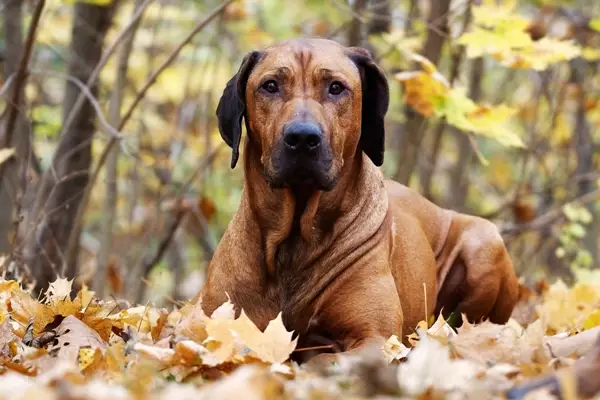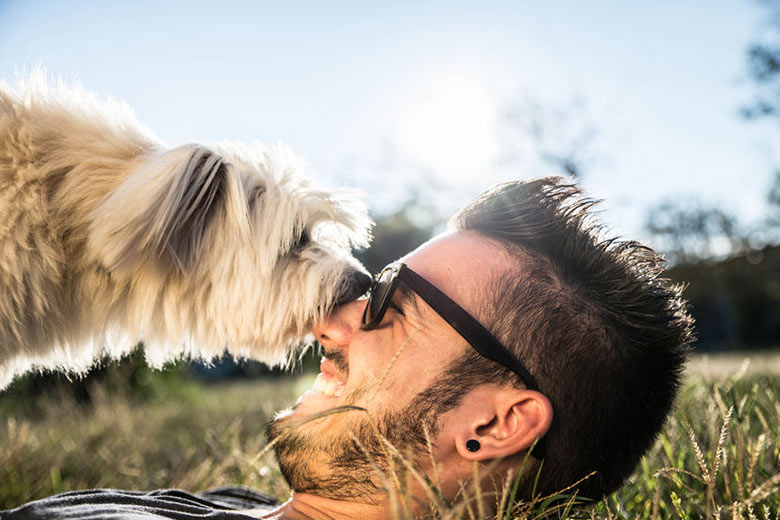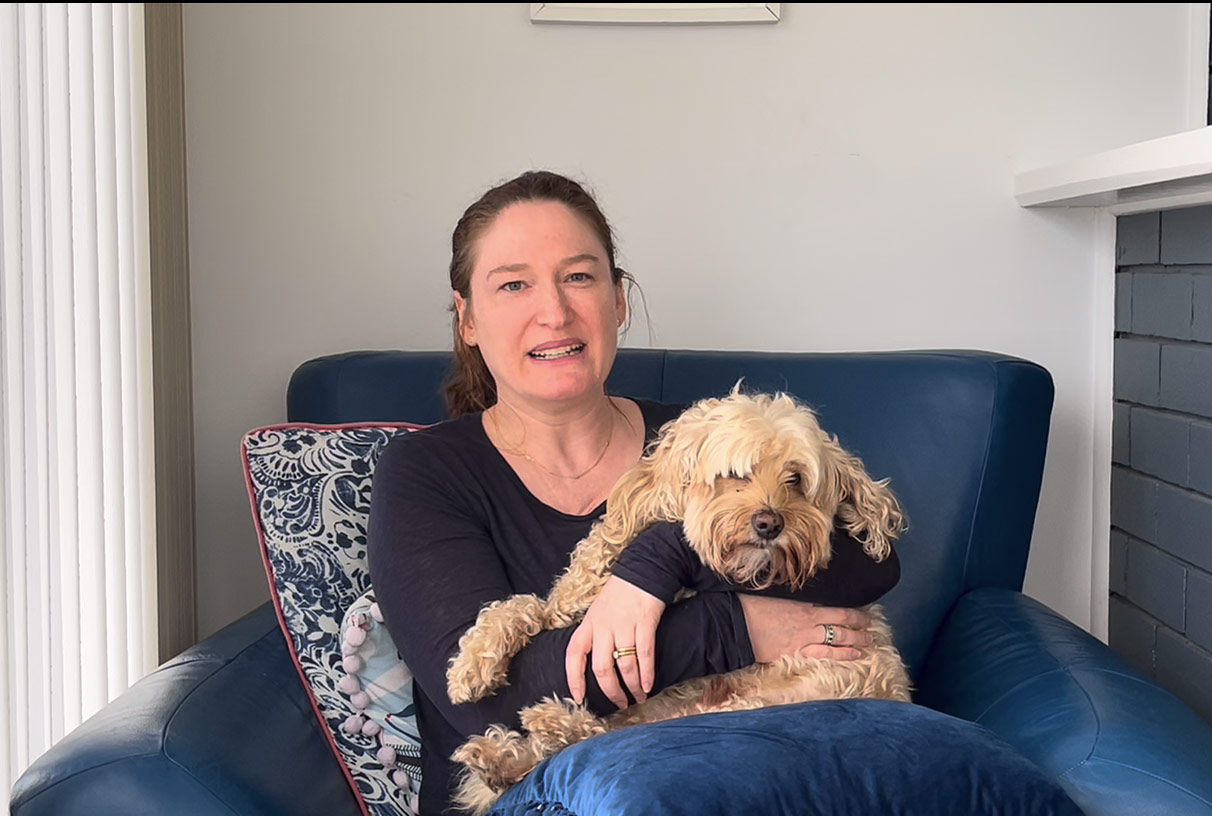Top 10 Large Dogs In Australia
Large dogs are everywhere… running, playing and chasing balls in dog parks, walking the suburban streets and hiking the nature trails with their owners… Some large breeds may look intimidating, but most of them are gentle giants who actually make wonderfully loyal and faithful companions.
 If you have a family that loves to play and exercise outdoors and a big backyard where a large-sized dog can run around and expend its energy, you may find your perfect match amongst these commanding canines. Most large breeds love nothing more than bonding with their owners, tossing a ball around outside, and acting as great guard dogs and protectors.
If you have a family that loves to play and exercise outdoors and a big backyard where a large-sized dog can run around and expend its energy, you may find your perfect match amongst these commanding canines. Most large breeds love nothing more than bonding with their owners, tossing a ball around outside, and acting as great guard dogs and protectors.
Large dog breeds typically weigh more than 25kg, although some of the giant breeds can tip the scales at more than 90kg (females tend to be slightly smaller than their male counterparts). So, be sure to consider the cost of food and care and the amount of daily exercise they require, especially if you’re a first-time pet owner. No matter their size, though, these dogs are often the gentlest of giants — especially if you take the time to train them well.
There are some fantastic large breeds that have been popular family companions over many generations, and many of these are just as desirable now as ever. Labradors, Rottweilers and German Shepherds have long been on the list of top large dog breeds, while more recent arrivals include the designer Labradoodle and Golden Doodle (Groodle).
Here are the most popular large dog breeds in Australia at present, listed in no particular order, along with a brief description of each. Perhaps you’ll find your next best friend on the list…
1. Labrador

Active and loyal
Claiming the number one spot on the list of the most popular large size dogs in Australia over many years, Labradors have a lovable nature, an excellent temperament and are easy to train. Bred originally as gun dogs, today Labradors are renowned for their work as assistance dogs for visually impaired and autistic people, detection & screening dogs, therapy dogs and law enforcement dogs.
Affectionately known as Labs, these are highly intelligent dogs who are keen to learn and eager to please. Labradors will thrive with plenty of mental stimulation and confident, consistent handling. Energetic dogs and therefore well-suited to people who love to get out and about, they need to be taken on a long, brisk walk or jog at least once a day to burn off some their energy – or else may resort to chewing the furniture or digging up the garden.
Labradors vary widely in appearance, but they are generally quite large and muscular with a short, dense, water-repellent coat, a broad head, brown or hazel eyes, strong jaws, a medium muzzle, and an “otter tail” which is thick at the base and narrower at the tip. There are three main colour varieties in Labradors: black, yellow, and chocolate, and occasionally all three can be present in the same litter.
Healthy male Labradors weigh between 29 and 36 kg and stand at about 57 – 62 cm tall. Females weigh about 25 – 32 kg and stand at 55 – 60 cm tall. They tend to gain weight quite easily, so exercise and a balanced diet are especially important for this breed.
Life expectancy in Labradors is around 10-13 years.
2. Golden Retriever

Gentle and friendly
Kind, confident and friendly, the Golden Retriever is one of the world’s favourite dog breeds. Originally bred as a working gun dog, the Golden Retriever is an intelligent, trainable and loyal companion that is widely considered to be the perfect family dog.
Because of their intelligence, they make great working dogs and can perform a number of different roles including seeing-eye dogs, hearing dogs, hunting & detection dogs, and search and rescue dogs. They need a lot of daily exercise to keep them entertained and fit, so they suit families with active lifestyles.
The breed is named for its lustrous, thick, golden coat which sheds throughout the year but particularly around the change of the season. It has a thicker, water-repellent top coat and a soft undercoat to keep the dog cool in warmer months and warm in cooler months.
Healthy male Golden Retrievers weigh between 29 and 34 kg on average and stand at about 58 – 61cm tall. Females weigh in at 27 – 32 kg and stand at 55 – 57 cm tall.
The average lifespan of a Golden Retriever is around 11-12 years.
3. German Shepherd

Intelligent and energetic
Consistently making the top 10 list of most popular breeds of any size in Australia for many years, German Shepherds are renowned for their bushy, thick tails, pointy ears and wolf-like appearance. Interestingly, their coat colour is not known until they shed their puppy coats, but it is generally a mixture of black and gold.
German Shepherds were bred for their intelligence, and are regarded as one of the smartest dog breeds. Their intelligence, obedience and trainability have led the German Shepherd to become one of the most adaptable and versatile dog breeds in the world and they are often employed in military, search & rescue and police roles.
German Shepherds are considered to be a very safe breed when trained well and socialised early and often, and for this reason they are a very popular family pet. They are highly active and love strenuous activity, while a lack of exercise or mental challenge can lead to restless and destructive behaviour.
Healthy male German Shepherds generally weigh in at 30 – 40 kg and stand at 60 – 65 cm tall. Females are usually between 22 and 32 kg and stand at about 55 – 60 cm tall. Their life span is usually around 10 to 14 years, but some have been known to reach the ripe old age of 20.
4. Labradoodle

Friendly and patient
The Labradoodle is an Australian designer breed dog – a cross between the Labrador and the standard Poodle – developed as a good-natured companion animal with a thick, wavy or tightly curled hypoallergenic coat that is low shedding. An intelligent and energetic breed, the Labradoodle requires a great deal of exercise and attention to remain mentally and physically stimulated.
With a cheerful, good-natured temperament, this hybrid breed has the best qualities of both parent breeds and has been described as one the best companion breeds available. Highly affectionate and loyal to their owners, Labradoodles are exceedingly patient with children, making them ideal pets for young families. They are also used for therapy work and as companions for the elderly and disabled individuals.
Because the Labradoodle is a relatively new cross breed, size and weight vary, sometimes wildly. Standard Labradoodles tend to grow to about 50cm or more. The average standard Labradoodle should weigh in the vicinity of 23 to 45kgs and will generally live to the age of 12 to 14 years.
5. Rottweiler

Loyal and active
The Rottweiler (a.k.a. “the Rottie”) is renowned for its large, muscular build and unique coat colour. Originally bred as a herding dog, today’s Rottweiler is eager to work and is therefore often utilised as a guide dog, guard dog, police dog, and search & rescue dog.
The Rottweiler is a confident, calm and courageous dog breed with an unwavering devotion to its owners, whom it will defend at all costs. Being so highly protective of their family, they tend to be wary of strangers and can be somewhat intimidating towards them. Rotties are inclined toward dominance and often test their position in the family. Training is therefore required from a young age in order for the owner to achieve “pack leader” status and to curb any tendencies towards aggression.
Rottweilers are big, energetic dogs that need at least one walk per day. Therefore, they are suited to active owners who have enough time to give their dog an adequate amount of exercise.
Healthy male Rottweilers weigh between 50 and 60 kg and stand at 61 to 69 cm tall. Females weigh in at about 35 to 48 kg and stand at about 56 to 63 cm tall. The average lifespan of the Rottweiler is 8 to 10 years, but some have been known to live up to 16 years old.
6. Dobermann

Intelligent and loyal
The Dobermann (a.k.a Doberman Pinscher or Doberman) generally has a square, compact build which reflects its athleticism, endurance and agility. Often depicted as aggressive because in the past they were commonly used as guard dogs and police dogs, they are highly energetic and require a long walk or jog every day.
Modern Dobermans have a much more even temperament and are extremely smart, fiercely loyal and highly trainable. They thrive on human interaction and are usually very sociable with humans and other dogs. They are best suited to active, experienced owners with strong leadership skills, while small children and adult dogs may not mix well with the Doberman.
They have naturally strong guarding instincts and remain one of the breeds more inclined towards aggression, therefore they require all members of the family to consistently show their authority over the dog. When on walks, the human must be the leader and should always be in front of the dog.
Healthy male Dobermans usually weigh between 34 and 45 kg and stand at an average of 68 cm tall. Females weigh between 27 and 41 kg and stand at about 64 cm tall. The average lifespan of a Doberman is 10 to 13 years old.
7. Australian Shepherd

Lovable and active
The Australian Shepherd (also known as the ‘Aussie’) is a medium to large-sized working dog with a wavy coat. Developed as a working breed with a huge amount of energy and drive, the Australian Shepherd is ideal for an active family because they love plenty of exercise and having things to do. This is a breed that requires plenty of exercise to stop them from becoming bored.
Aussies are lovable and intelligent dogs who love the company of people and crave human contact. They are very loyal and affectionate to their families, but they tend to be a bit reserved with strangers who are not part of their family. Their natural herding instinct can be quite dangerous if they are not trained as it can lead to them try and herd anything from young children to bikes and cars.
This is a breed that needs set boundaries. While the Aussie is relatively easy to train, they can be independent-minded, so persistence and mixing things up a bit by teaching them new tricks is recommended. Apart from exercise and playing fetch, they also enjoy playing games like hide and seek, fly-ball and agility activities.
Male Aussie’s usually weigh between 23 and 29 kg and stand at about 50 to 58 cm tall. Females weigh about 14 to 20 kg and stand at 45 to 53 cm tall. The average life span of the Aussie is 12 to 18 years.
8. Golden Doodle (Groodle)

Social and tolerant
The Groodle or Goldendoodle is a fairly new, hybrid breed of the Golden Retriever and Poodle. Developed as a hypo-allergenic companion animal and family pet, they have a mid-length coat that can be wavy or curly. Highly intelligent and energetic, Groodles require a good deal of mental and physical stimulation and do best with an active, engaged family that doesn’t leave their dog alone for extended periods.
As family pets the Goldendoodles show a great deal of tolerance and loyalty to their owners. Known for their easy going and calm nature, they have a great reputation with children. The placid and care-free nature of the Golden Retriever, paired with the energetic and playful character of the Poodle, makes for an enthusiastic and joyful companion. Being very social and human-orientated animals, Goldendoodles love being involved with the family and need regular human contact to remain happy.
Because the Goldendoodle is a crossbreed, they come in a variety of shapes and sizes. Larger sized Goldendoodles can weigh between 23-45kgs. A healthy Goldendoodle will usually live to between 12 and 15 years of age.
9. Weimaraner

Active and friendly
The Weimaraner is a lean and athletic looking dog with great endurance that was originally bred as a hunting dog. Weimaraners require a great deal of attention and stimulation from their owner to remain fit and happy, including being exercised often and for extensive periods.
Unlike many other hunting breeds, the Weimaraner has a dependant nature and is not suited to living outdoors or being left alone for long periods. It requires a good deal of human attention and will never show a desire to spend time a part from its owner. It tends to be shy ad wary with strangers but will warm up to them soon after being introduced.
A happy Weimaraner will be well exercised and well socialised. Weimaraners hate being excluded from family activities or outings and love to be rewarded and showered with attention. If left without contact for an extended period of time, the breed is susceptible to separation anxiety which can cause it to get up to mischief, often resulting in damage to property or injury to the animal if it tries to escape.
Generally, a Weimaraner will grow to between 64 and 69 cm and weigh in the vicinity of 32 to 36kgs. They will usually live to the age 10 to 12 years.
10. Rhodesian Ridgeback

Gentle and obedient
The Rhodesian Ridgeback is tall and muscular, with a broad, flat head and triangular ears. It is known for the strip of hair growing in the opposite direction on its back, giving it the name “Ridgeback”. Although they were notorious for being ferocious hunters, Rhodesian Ridgebacks can make great companions if their needs for exercise and stimulation are satisfied.
They are they are calm, gentle and loving at home, as well as obedient, brave, intelligent and alert. To prevent them from being too reserved, they should be socialised and trained from a young age. They are not recommended for people who do not have enough time or are not willing to put in the effort with their dog. An inactive Rhodesian Ridgeback can become destructive or develop behavioural problems, so regular and extensive physical activity and mental stimulation are needed to keep it occupied. Also, they do not mix well with young children as they often play rough and can knock them down.
A healthy male Rhodesian Ridgeback stands at 64 – 69 cm tall and weighs around 39 kg. Females weigh about 32 kg and normally stand between 61 and 66 cm tall. Their lifespan is about 10 to 12 years.
If you’re interested in looking at some other large dog breeds, visit our complete list of large dog breeds available in Australia.






















